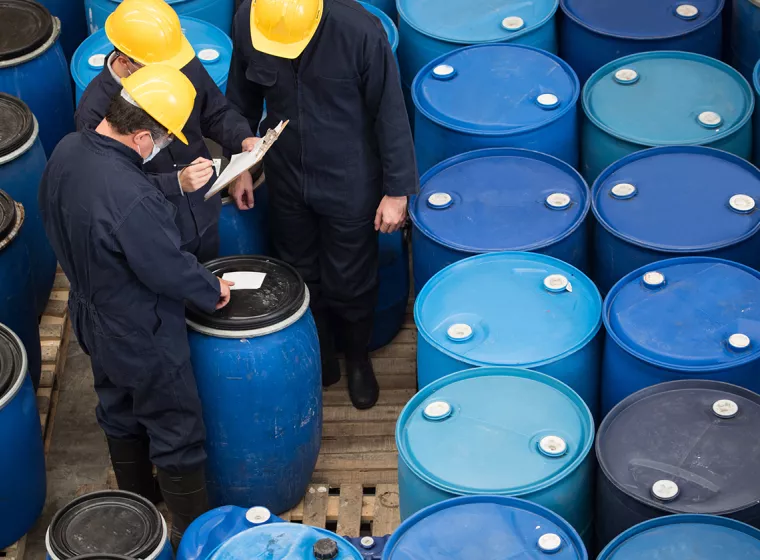October 20, 2025
The European Chemicals Agency's updated proposal considers alternatives to PFAS bans for some applications, expands evaluation of PFAS uses
In 2023, the European Chemicals Agency (ECHA) proposed sweeping restrictions on the use of per- and polyfluoroalkyl substances (PFAS) under the EU's Registration, Evaluation, Authorisation, and Restriction of Chemicals (REACH) regulation. Now, ECHA has published an updated proposal in response to thousands of comments received from a wide range of stakeholders
The updated proposal considers options for continued use of PFAS for certain applications, in contrast to the original proposal, which amounted to an effective ban on PFAS as a chemical class. It also expands its evaluation to eight new use sectors in addition to the 15 included in the original proposal.
What's in ECHA's updated proposal to restrict PFAS use?
ECHA's 2023 proposal recommended imposing extensive restrictions on the manufacture, use, and import of PFAS-containing products in the EU, affecting numerous consumer goods, like cookware, cosmetics, and applications such as firefighting foams. In this proposal, the term "PFAS" was defined as any substance containing at least one fully fluorinated methyl (CF3-) or methylene (-CF2-) carbon atom, without any H/Cl/Br/I attached to it. As a result, the proposed ban would affect a wide range of chemicals and materials used across many industries, including consumer products as well as important components of machinery like seals and gaskets.
The original proposal included two regulatory options: a total ban after an 18-month transition or time-limited exemptions of up to 12 years for products where PFAS-free alternatives were not yet feasible. Time-unlimited derogations were also under consideration for "exceptional cases based on practical considerations."
The updated proposal adds an alternative regulatory option that would allow for "continued use under strict conditions that minimize emissions over the full life cycle." The new proposal suggests that the total ban after a transition period "is likely not implementable," while options involving time-limited exemptions or continued but tightly regulated use are "practical with regards to implementability, enforceability and manageability."
The updated proposal also includes evaluation of an expanded list of PFAS use sectors. The original proposal addressed the following 15 sectors:
- PFAS manufacturing
- TULAC
- Food contact materials and packaging
- Metal plating and manufacture of metal products
- Consumer mixtures
- Cosmetics
- Ski wax
- Applications of fluorinated gases
- Medical devices
- Transport
- Electronics and semiconductors
- Energy sector
- Construction products
- Lubricants
- Petroleum and mining
The updated proposal addresses the following eight additional sectors:
- Printing applications
- Sealing applications
- Machinery applications
- Other medical applications
- Military applications
- Explosives
- Technical textiles
- Broader industrial uses
What comes next for ECHA's proposed PFAS restriction?
According to a recent statement, ECHA is committed to delivering final opinions from its scientific committees to the European Commission in 2026. While this may delay a final vote by the EC, how these updates will affect the timeline for implementation remains unclear, depending on when final opinions are received and reviewed and which regulatory options are ultimately applied to which uses. Many industries, however, are already feeling the effects of the proposed ban in the marketplace.
Many manufacturers are experiencing insecurity of the supply of PFAS-containing materials or components. Even if a full ban is not implemented, companies may choose to exit the marketplace or phase out certain products, restricting the ability of some customers to continue making products using existing materials or processes. Exponent can assist with alternative materials evaluations for companies seeking alternative chemicals or materials for their applications.
Given the time required to identify, analyze, and replace PFAS in products and equipment, charting a PFAS strategy now is critical for stakeholders across many industries. In the short term, companies may benefit by determining whether certain PFAS compounds exist in their products and processes, including unintentional PFAS sources, by designing an approach for assessing their supply chains, finished goods, and waste streams. If PFAS are identified, knowing how the specific use fits into derogation proposals, and whether levels are above or below threshold limits, is essential. Equally important is knowing where and how PFAS may be entering products through the manufacturing process, such as from PFAS-containing grease on conveyor belts encountering food stuffs and being transferred into food packaging.
What Can We Help You Solve?
Exponent closely monitors the continually changing PFAS regulatory landscape to help clients prepare for new restrictions. Our experts have years of experience investigating supply chains for PFAS sources, working with third-party laboratories to test materials and products for specific PFAS and total organic fluorine, and assisting clients in making decisions that suit their product lines and stewardship goals.

PFAS Consulting Services
Manage PFAS in your products, supply chains, and waste streams.

EU REACH Support
Extensive consulting services to help you meet the EU's REACH compliance requirements.

Product Stewardship
Overcome business and regulatory challenges at every stage, from research and design to disposal and recycling.

Environmental & Regulatory Compliance
Rigorous analyses to help clients overcome complex environmental and regulatory hurdles and meet auditing obligations.
![Regulatory Compliance [BES]](/sites/default/files/styles/cards_home_card/public/media/images/GettyImages-1343544200.jpg.webp?itok=fX0tve2u)
Food Contact Materials Support
Evaluate whether Food Contact Materials (FCMs) are compliant for the markets of interest.

Emerging Contaminants
Exponent helps clients with chemical regulatory compliance, supply chain assessments, and mitigation and substitution strategies for CECs.





